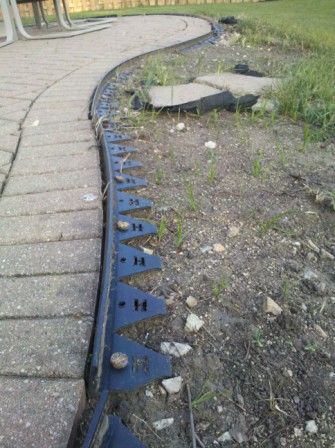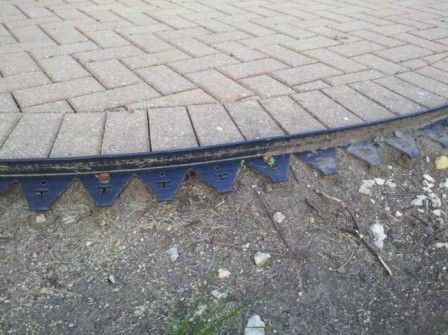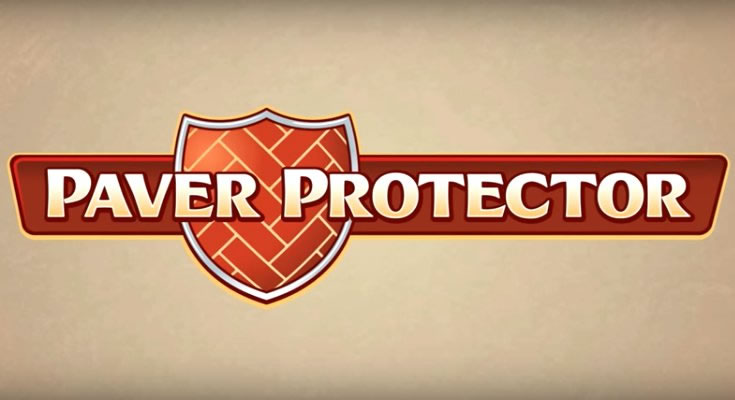What is the black plastic strip along my pavers? That plastic strip is called paver edging or paver edge restraint. This should be installed along every paver surface that doesn’t but up against a house or concrete or any other fixed object.

Why do I need paver edging? Paver edging is designed to hold the paver system together by not allowing outward shiftments of the pavers. As you walk across the pavers or as cars drive across pavers they want to spread and the edging holds them tightly together maintaining a solid pavement. Without edging your pavement will spread and the structural integrity will be comprised. It’s not a matter of if but when.
Why can I see the edging? Edging is degined to be shorter then the paver so that it is not seen. If your edging is showing there are 2 reasons for it. the first is that the paver system is higher then surrounding areas and these areas were not backfilled. If the edge restraint is still below the top of the pavers then this problem is easily fixed by backfilling with dirt or mulch.
The other reason edging shows is when it rises above the surface of the brick pavers. The reason for this is frost heaving. The edging is held in the ground by driving 10 or 12″ steel spikes through holes in the edgin just big enough to fit the spike. Every winter when the ground freezes and thaws these spikes get squeazed up and out of the ground just a little bit. Repeat the process over a few years and often times the spikes rise up to a few inches bringing the plastic edging along with it. The main areas you will notice this is in mulch beds. There is not enough weight or any roots systems to help hold down the edging. In grassy areas the edging will stay in place longer but can rise up.

Do I need to fix edging that is above my pavers? Yes, for a few reasons. If the edging rises high enough above the pavers it will not be holding the brick pavers in place and spreading can occur. If the edging starts flexing out you can also notice the paver joints opening up which will cause sand loss and weeds/moss starting to grow.
Another reason to fix rising edging is for liability issues. It is easy to trip or stumble over anything that is higher than the surface of the pavers. And the last reason, usually the one that people call us for is the overall bad look of edging that is showing. To have a black plastic piece showing along pavers can ruin the overall appearance of you investment in a brick paver patio or walkway. Your eye is always drawn to what looks out of place and here that would be the edging poking its head over the bricks.
How can rising edging be fixed? There are a couple methods that Paver Protector uses to fix brick paver edging. The first is to remove the current edging and install new edging. Old edging is not reusable as spikes will be rusted and stuck in the edging which does not allow for proper installation.
Paver Protector removes the old edging, digs deeper along side the brick pavers and installs new edging at the correct height. We take a few installation measures that will delay the edging from rising as quickly.
Another method of edge restraint that Paver Protector uses is pouring a concrete edge to brace the pavers. This route often holds stronger and lasts much longer than plastic edging, especially in mulched areas.
How do I hire Paver Protector to fix my edging? Thats the easy part, just call us at 630-488-0069 or email at Info@PaverProtector.com Paver Protector serves the following communities and those neighboring these. Barrington, Inverness, Schaumburg, Crystal Lake, Algonquin, Lake In The Hills, Woodstock, Huntely, Hampshire, Dundee, Sleepy Hollow, Elgin, South Elgin, Bartlett, Wayne, St. Charles, Geneva, Batavia, Elburn, Wasco, Saint Charles, Del Web Huntley, the Fox Valley and nearby areas.

